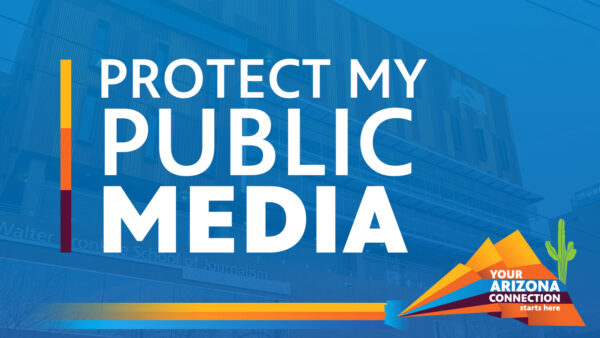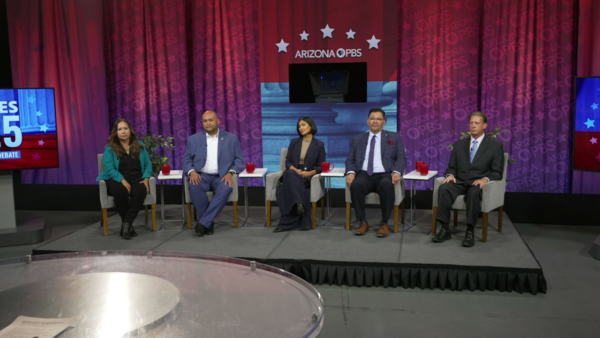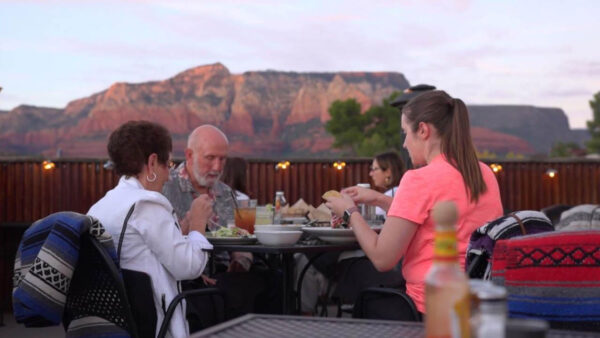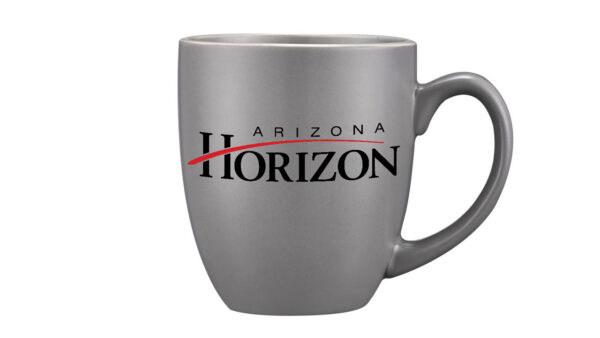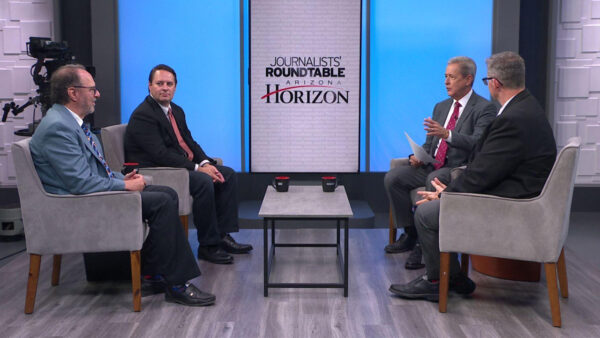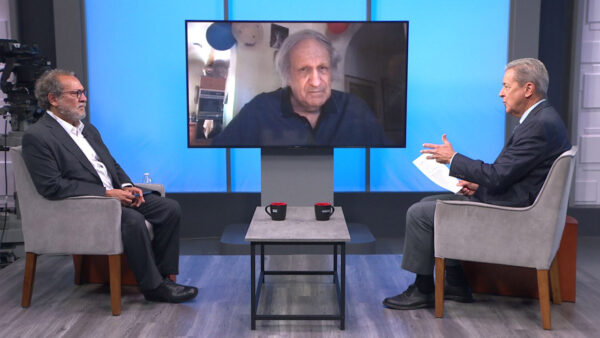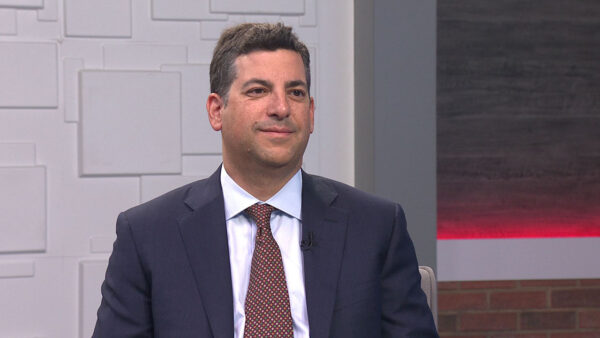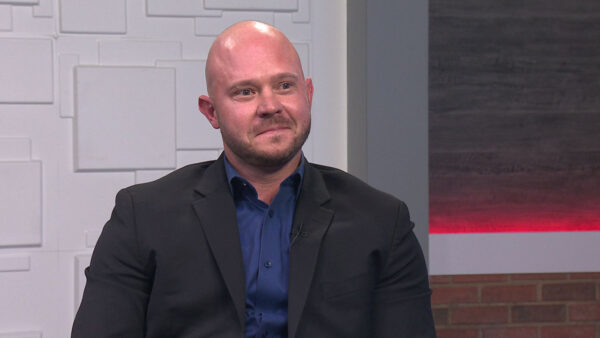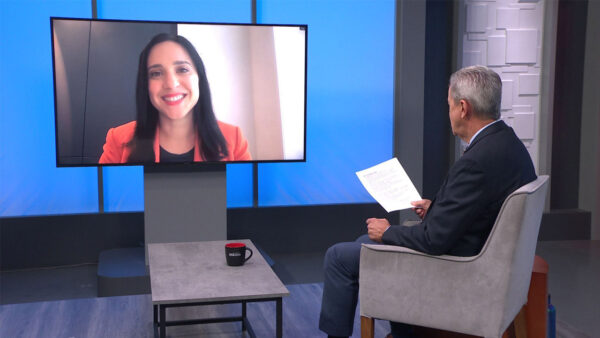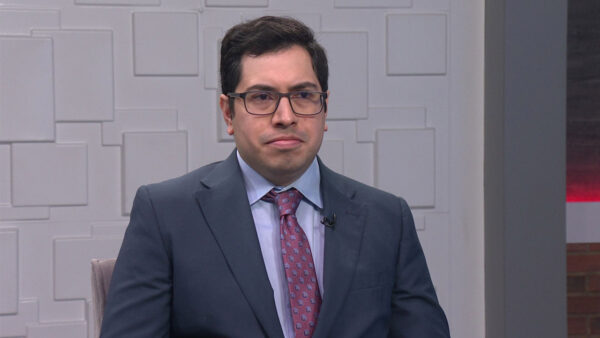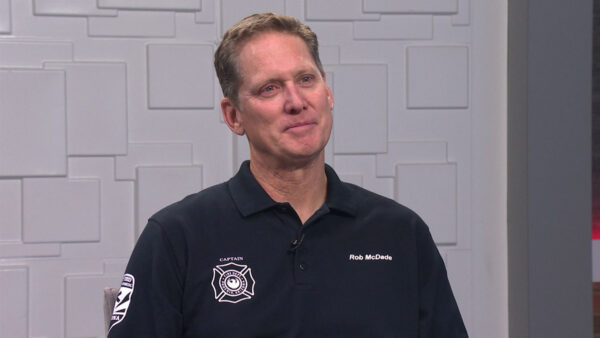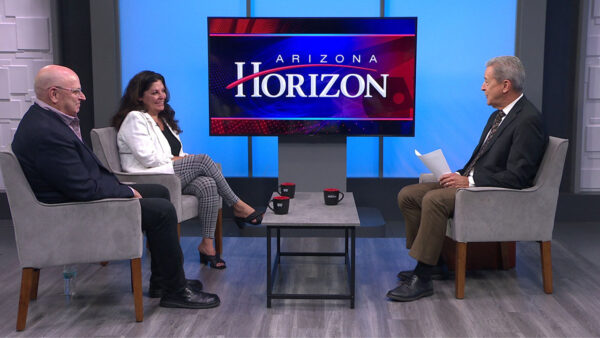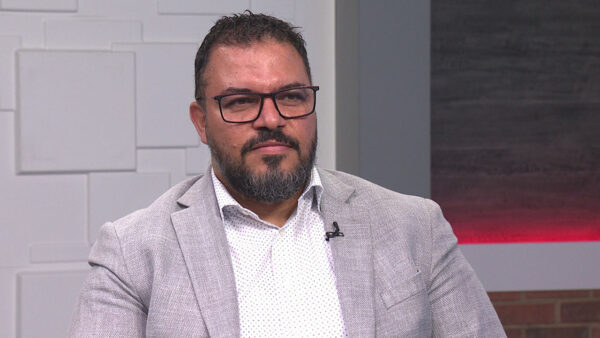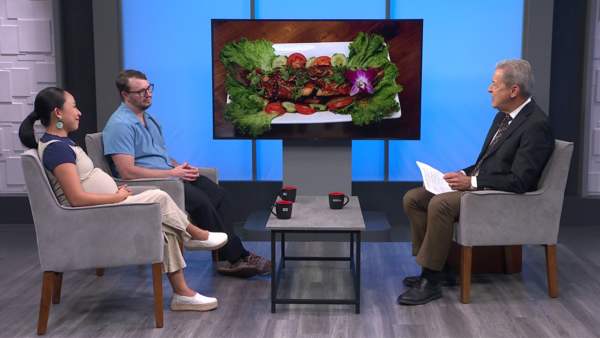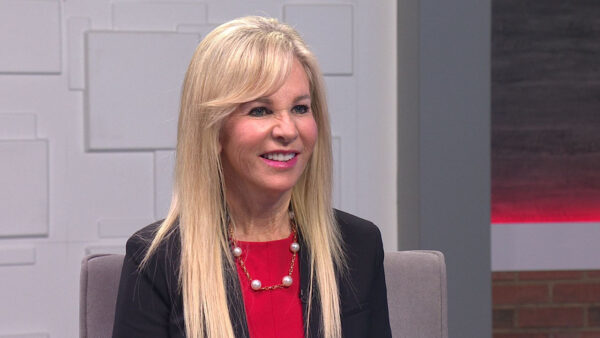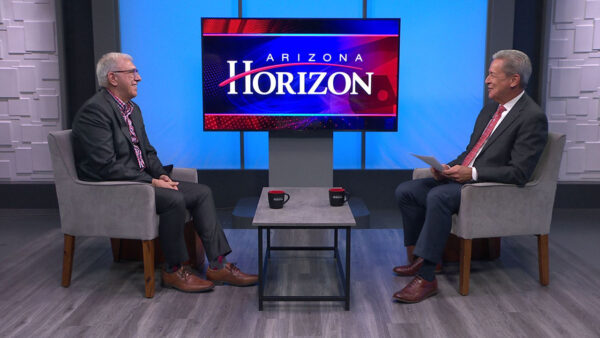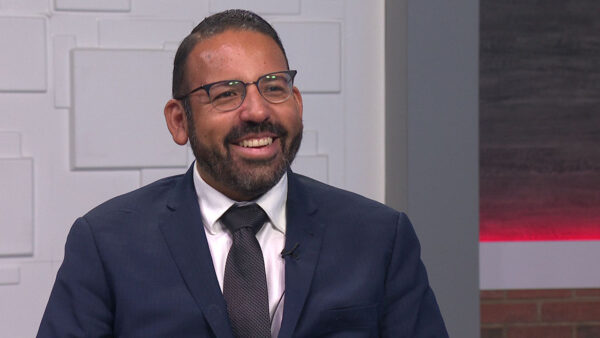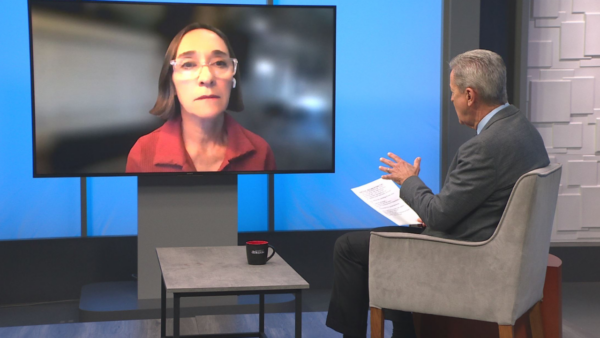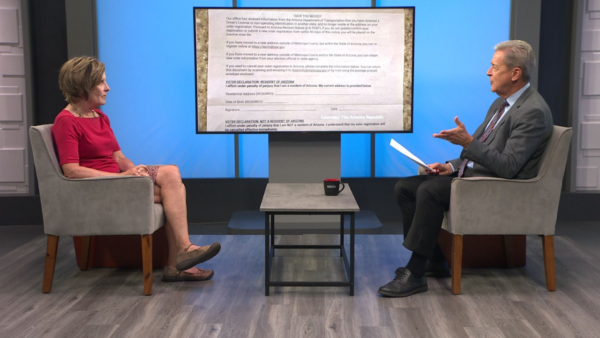Arizona State University, along with the National Center for Atmospheric Research, have conducted a first-of-its-kind study on the impacts of megapolitan areas on regional climate. The study found that the Sun Corridor, a megapolitan area running from Prescott to Nogales and expected to be home to nine million people by 2040, could raise temperatures by four degrees Celsius. Matei Georgescu, lead author and assistant professor in the School of Geographical Sciences and Urban Planning in ASU’s College of Liberal Arts and Sciences, will talk about the study.
Ted Simons: Temperatures in Arizona are expected to increase as the state's urban population grows and more of the desert is covered with concrete. Scientists at ASU and the National Center for Atmospheric Research recently completed a study on rapid urban growth and its impact on climate change. Their study focused on the sun corridor, Arizona's fast growing megapolitan area that includes Nogales, Tucson, Phoenix and Prescott. Here to talk about the study is lead author Dr. Matei Georgescu. He's an assistant professor for ASU's school of Geographical Sciences and Urban Planning. Good to have you here.
Matei Georgescu: Thanks for having me.
Ted Simons: What did you look at with this research and why?
Matei Georgescu: Well, our principal question was to try to answer the following research question. It's a very rapidly growing megapolitan area, the fastest growing megapolitan area in the United States. We wanted to know if warming impacts owing to this rapid urban expansion are as important as global climate change impacts. Because much of the policy governing global warming is really focusing on carbon emissions, not so much focusing on urbanization induced warming. If we can say urban induced warming is of the same order of magnitude, maybe we need to refocus the question and look at possible adaptation strategies where people live in urban locales.
Ted Simons: You found it was not only at the same magnitude, it was more so, correct?
Matei Georgescu: Correct. Depending on the exact path or trajectory of urban expansion, relative to climate change, differing scenarios of greenhouse gas emissions, the impact can be as large, or even larger than greenhouse gas and disclimate change.
Ted Simons: We're talking two to seven degrees warmer in the coming years, decades? How long?
Matei Georgescu: Our focus was up to about mid century. We used different scenarios of sun corridor expansion out to mid century. So 2050 we're talking about. We used this data courtesy of the Maricopa Association of Governments. We didn't develop that data ourselves. We input that data into our climate model and we diagnosed these warming impacts. I should say the warming impacts are during the summertime only. During that time of the year where humans are most stressed.
Ted Simons: As far as the study and what you input, what metrics were involved? How do you get A plus B equals C.
Matei Georgescu: Relative to what, seven degrees warmer relative to what. So a first step is as you said, to develop a baseline scenario. What we did was we conducted simulations, experiments with a numerical model using central Arizona urbanization from 2006. Then we repeated that simulation but we modified the sun corridor urban land use representation and we used this input data from Maricopa Association of Governments. These different scenarios of urban expansion.
Ted Simons: The two to seven degree increase possible here by mid century, the same for Prescott as it is for Nogales as it is for Phoenix as it is for Tucson?
Matei Georgescu: No, there are differing regional impacts of course. It's difficult to say exactly who is going to feel what sort of warmth. We haven't looked at it in that excruciating detail that is obviously a next step. What our work tries to address is what we need to look at urban heat island more deeply rather than just focus our policies on climate change.
Ted Simons: When we look at it more deeply, what should we be looking at?
Matei Georgescu: Basically the idea behind the whole urban heat island impact is the following: A lot of the incoming radiation during the daytime comes and is absorbed within the built environment. The built environment has a very high heat capacity. That means that that absorption of radiation doesn't necessarily translate into additional heating during the day, but that energy, that excess stored energy is then released during the nighttime, which means the following. At night there's not as much cooling as there would be normally.
Ted Simons: Basically if you're talking -- you mentioned something along the lines of painting rooftops white and these sorts of things. If everyone had a white rooftop and pavement were lighter at least, the stuff bounces off during the day, doesn't sit there waiting to make nighttimes warmer.
Matei Georgescu: Exactly. There's even less absorption during the daytime so you're cooler and are cooler during the nighttime.
Ted Simons: What about trees, grass, those sorts of things?
Matei Georgescu: That's also very important. We haven't looked at that directly. Of course in the Arizona, our geography doesn't lend itself so much because of irrigation, there's tradeoffs you have to associate here. You can plant more trees and more grass but what are the tradeoffs associated with that? How much water do you need? How much is it going to cost to use this water? What sort of scales do you need to water to plant trees to offset some of this warming?
Ted Simons: Are you getting some municipal urban planners and the light taking a look at this?
Matei Georgescu: We have had the media taking a look at this, but we have not yet been contacted by any municipal planners. We hope that's the next step and that we can work in concert with them to answer some of these issues.
Ted Simons: What do we take in general from this report? What is the bottom line, if you will?
Matei Georgescu: The bottom line, I'll segue a little bit. I had an interesting conversation with a buddy of mine in New Jersey who I correspond with frequently. New Jersey because I came here from New Jersey. I mentioned this study to him. He said that's interesting about the white roofs. What if you colored during the winter your roofs black and I said, why black? Because during the winter you have to go to warming. That's the sort of the community-level thinking we need to approach, all the way from the bottom from the local community all the way to regional agencies and on the way up. I'm trying to say we need to work together to address some of these issues.
Ted Simons: Are you feeling as though folks are not working together as much as they should?
Matei Georgescu: I'm definitely feeling, that yes. With the sort of anticipated growth in the sun corridor this is a great opportunity for us as residents of the fastest growing megapolitan area to work in concert to try to address some of these issues.
Ted Simons: Well it's an interesting study. Thank you for joining us.
Matei Georgescu: Thank you for having me.
Matei Georgescu:Lead Author, Assistant Professor, School of Geographical Sciences and Urban Planning in ASU's College of Liberal Arts and Sciences;
